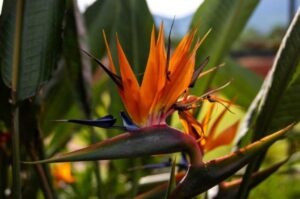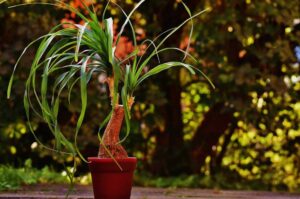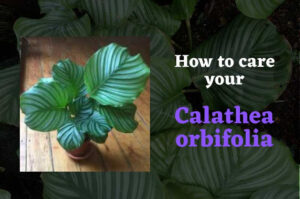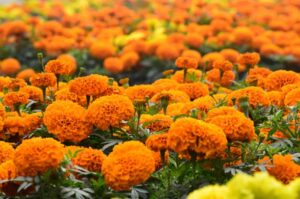Why Is My Calathea Not Closing at Night? (Problems and Solutions)
Calathea is one of the most loved house plants, for the indoor plant enthusiast. It has beautiful dark green foliage with contrasting variegation. Also, the air-purifying character is just like the cherry on the cake.
The Calatheas are also known as the Prayer plant, because they fold their leaves at night, just like they are praying to Almighty God, as humans do by folding their hands.
Sometimes people often complain that their Calatheas are not closing at night. In this article, we are going to discuss this confusion, Why your Calathea is not closing at night?
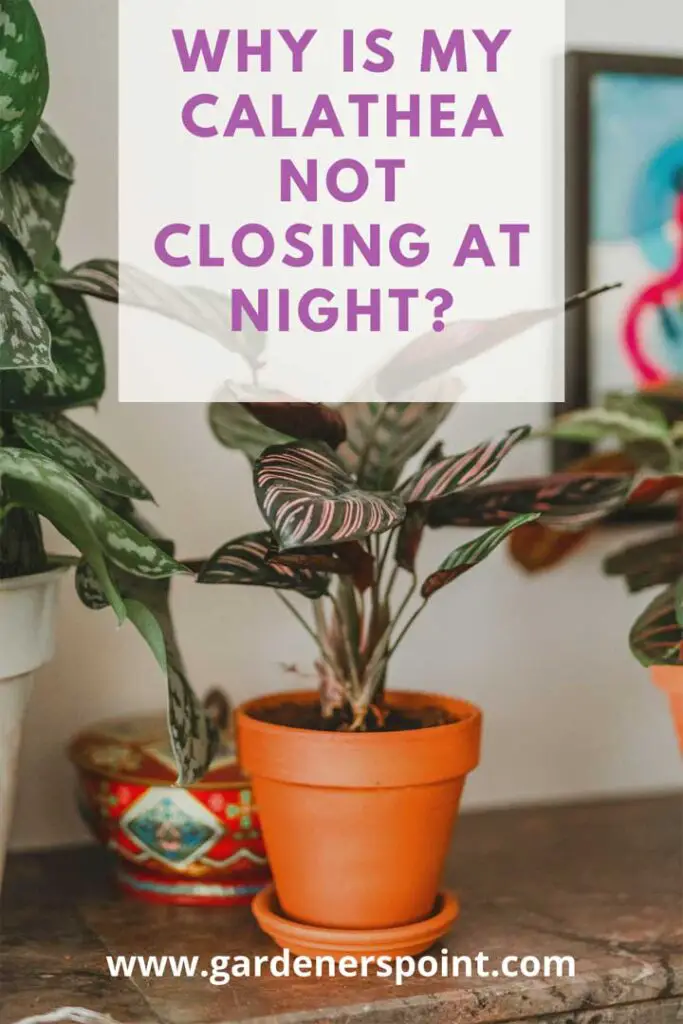
Why Is My Calathea Not Closing at Night?
The most common reason for which your Calathea is not closing at night is that, your plant is getting too much light. It is not getting a completely dark condition at night, which is very much essential for the closing of Calathea leaves.
An artificial source of light is continuously penetrating the leaves of your plant and hampering its diurnal cycle. Apart from the lighting issues, watering problems and pest infestation might also cause the Calathea leaves not to move at night.
Calathea is a plant, originated from the tropical forests of South America(Brazil, Columbia, Ecuador). It is found beneath the big tall trees of the rainforests. Therefore gets enough bright indirect light in the daytime and pitch dark condition at the night.
This type of lighting triggers the closing and opening movement of Calathea leaves.
During the daytime, there is an ample amount of bright indirect sunlight. Therefore, the Calathea plant keeps its leaves open, so that it can carry out photosynthesis. But at night, when there is no light, the plant folds its leaves up.
If the plant will not get a complete dark condition at night, the mechanism that causes the Calathea plant to fold its leaves, will not be triggered and the leaves will not close.
Do all Calatheas close at night?
Yes, almost all known Calathea species close their leaves at night. Not only Calathea but all plants belonging to the Marantaceae family (also known as the arrowroot family) folds their leaves at night. Therefore, the family itself is called the prayer plant family.
There might be some variation in the movement of the leaves of different species, but there is always a movement is there in response to light.
You will love to read our care guide on different species of Calathea like Calathea Musaica (Network), Calathea ornata, Calathea orbifolia.
All the species of Calathea needs almost a similar type of care.
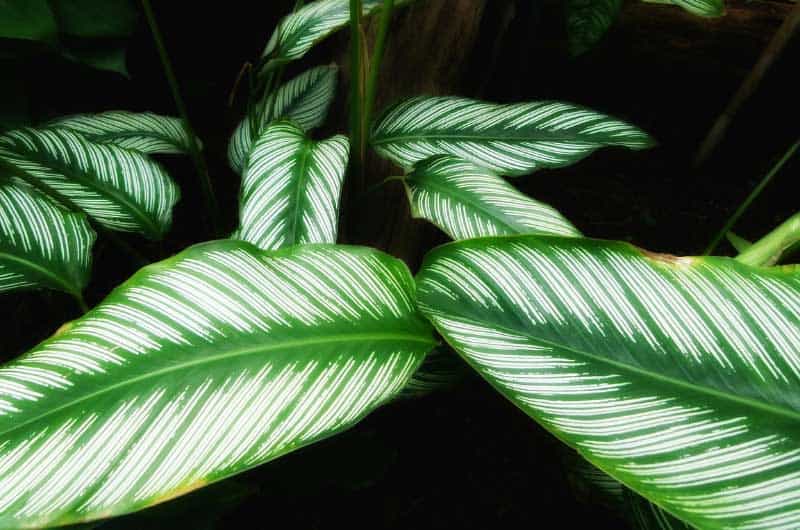
A Few Reasons For which Calathea is not closing at night
Here is the list of problems for which your Calathea is not closing at night
- Lighting issue
- Overwatering
- Underwatering
- Low humidity levels
- Exposure to low temperature
- Pest infestation
A detailed discussion will further clarify the above points
1. Lighting issue
Every living organism has a diurnal cycle that repeats itself every 24 hours. Just like for human beings, when the sun goes down and the dark period approaches, humans, feel sleepy automatically, and in the morning when the sun rises, we humans become active. You can say it a human tendency or a habitual action, but our body is adapted to such type of diurnal changes.
Similarly, the Calathea plant has also adapted its internals in such a way that at night time its leaves folds, and at day time it open again. This diurnal cycle continues day by day as normal sunrise and sunset happen.
But if you manipulate the natural phenomenon then the plant will also show different types of variation in its regular behavior.
When the plant will not get a completely dark period at night, it will not trigger its internals to close the leaves. As a result, the plant will not fold its leaves.
So the main issue for which your Calathea is not closing at night is related to lighting. Your plant is probably getting too much light at night, for which it is not closing at night.
If your Calathea is not closing at night, the very first thing you have to look at is the lighting condition.
Solution
- Ensure that the plant is getting a good amount of bright indirect light in the daytime and a proper dark condition at night.
- If your plant is not getting such types of conditions then, move it to a different place where it can get its desirable growing condition.
- An east-facing window is an ideal place for this plant.
- Never expose the plant to direct sunlight for a long time. It will burn the leaves.
2. Overwatering
After lighting issues, the watering issue is the 2nd most critical issue that may prevent your Calathea plant from closing its leaves at night.
Overwatering is a major issue that can result in stopping the movement of Calathea leaves.
Calatheas loves to sit in moist soil, but the soil should not be waterlogged. Applying too much water regularly will create a waterlogging condition, which is not ideal for the Calathea plant.
The prolonged waterlogged condition can cause rotting of the roots, due to lack of free oxygen near the roots. Once the root started rotting, it will stop functioning properly.
As a result of which, the water uptake will be hampered and the vital plant functions will be affected. Majorly the opening and closing movement of Calathea leaves will be hampered.
Therefore overwatering should be avoided in the case of the Calathea plant.
How to prevent overwatering in Calathea plant
You can take the following measures to prevent overwatering
- Choose a well-draining potting soil for your plant.
- The pot should have enough drainage holes to remove all the extra water.
- Apply water only when the top two-inch layer of soil is dry.
- Keep the plant in a well-ventilated place getting bright indirect sunlight. It will increase the rate of evaporation as a result of which the water can escape quickly.
- Carefully mark if the plant is showing any overwatering symptoms like yellowing of leaves, drooping of leaves, etc.
- If getting those symptoms, check the roots at the time of
3. Underwatering
Similarly underwatering also keep the plant dehydrated and affects the normal functionaries of the plant, which might stop the movement of Calathea leaves.
Calathea plants can bear underwatering occasionally, but doing it regularly or for a prolonged period of time will hamper the plant growth. The plant will be dehydrated and show wilting symptoms.
This might also prevent the closing of Calathea leaves.
How to prevent underwatering
- Check your potting soil regularly, apply water only when the top two-inch layer of soil is dry.
- Keep the environment humid. You can use a humidifier, that automatically maintains the required humidity level in the atmosphere.
- You can also use some automatic houseplant watering systems.
4. Low humidity levels
Calathea is originated from tropical forests, where the humidity levels are always high. So it is adapted to humid and moist places and grows ideally in those places.
Lower humidity levels in the house make this plant grow less vigorously and can result in not closing of leaves at night. So you have to maintain a humid climate for your Calathea plant, and also for all tropical indoor plants.
How to increase humidity levels
- You can use a humidifier to maintain a perfect humidity level. It can automate the process and all you have to do is, only switch on the humidifier.
- A pebble tray can also be used to keep the humidity levels high.
- Grouping your houseplants can also increase the humidity of the surroundings by the mutual action of transpiration.
- You can also keep your Calathea plant in such a location that is already humid, like near your bathroom and kitchen.
5. Exposure to low temperature
Calatheas loves to grow at a normal room temperature. The ideal temperature range is around 65 to 80o F, which is normally an available condition in all households.
But the Calathea plant struggles to grow when exposed to low temperature. The cold drafts from air conditioners and from the open windows can be harmful to the plant.
So you have to place this plant in such a place that, it should not get such cold drafts. And special care should be taken during the winters.
6. Pest infestation
Pest infestation is another crucial issue, which can result in not closing of Calathea leaves at night.
Common houseplant pests like spider mites and aphids are the most common pests attacking a Calathea plant.
Spider mites will cause webbing of the leaves, causing harm to the leaf tissue, which will result in no movement of Calathea leaves.
They can be detected by closely observing the leaf surface. They will appear as small black dots.
And the aphids suck the cell sap, resulting in the deformation of leaves. Both of them are harmful to your Calathea plant.
How to control pest infestation
- Wipe the infected leaves with a soaked cotton ball to remove the pests.
- You can spray neem oil.
- You can also spray any ready-to-use organic insecticide.
- Provide the plant an ideal growing condition.
Final thoughts
It is not a serious issue if your Calathea is not closing at night. It is just a signal that something is going wrong. It is not going to kill your plant. But the corrective measures will provide a better environment for your plant.
Take care of the lighting condition and your plant will again resume its leaf movement.

